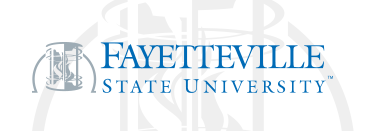A comparison of year-round and traditional students' achievement scores in reading, mathematics, and other variables
Abstract
Research (Wiebe, 1992) of school calendars indicated that achievement gains made by students during the school year decreased during the summer months when traditional students are out of school. This study compared year-round and traditional students' achievement in reading, and mathematics. The students were all enrolled in the same school building during the initial year of the three-year study. The study used a quasi-experimental method and a nonequivalent control group design. The subjects were 909 students enrolled in the traditional and year-round calendar (control and experimental groups of students, respectively), in the initial year of the study (1995-96). Middle school students End-of-Grade Test (EOGT) scores in reading and mathematics were analyzed for the students who were enrolled in grades 6-8 in the first year of the study. Only those students who were enrolled in grades 6-8 in the first year of the study were included in the data analysis for year two (1996-97) and year three (1997-98) of the study. Scores were analyzed for two grade levels in year two of the study (1996-97) and one grade level in the final year of the study (1997-98). Students who enrolled in the year-round calendar applied for, and were accepted into the middle school, school-within-a-school program. Students' and parental choice was an option in selecting either the year-round or traditional calendar, each year of the study. The study ascertained whether student achievement gains made by year-round students significantly exceeded the academic achievement of traditional students enrolled within the same school environment. In addition, the study determined if other related variables, including gender, homework, parent education-level, race, telephone use, and video game use, impacted learning at the middle school level. Furthermore, the study examined the interaction between year-round calendar with gender, parent-education-level, and race. Both the year-round and traditional middle school students in grades six, seven, and eight were given a pre- and post-test using the North Carolina End-of-Grade Test in reading and mathematics during the three year study of middle school achievement. The 1994-95 and 1995-96 scores were used as the pre-test and post-test respectively, the first year. The tests were administered to all students on the same days, using the same criteria and under the same conditions. Multiple regression analysis was used in analyzing the EOGT data to determine those variables that differentiated the year-round and traditional students. In the first year of the study, and in subsequent years, the reading and mathematics data were analyzed with and without weight added to the unequal sample size in the year-round and traditional calendar. In the first year of the study (1995-96) there were 290 students enrolled in the year-round calendar, and 619 students enrolled in the traditional calendar. The finding indicated that several independent variables differentiated the year-round from the traditional students. The results of reading and mathematics achievement scores using multiple regression analysis on middle school students enrolled in the school-within-a-school model concluded that a significant difference existed between students enrolled in the year-round calendar than students enrolled in the traditional calendar.
Subject Area
Mathematics education|Literacy|Reading instruction|Curriculum development
Recommended Citation
Brown, Terry Martin, "A comparison of year-round and traditional students' achievement scores in reading, mathematics, and other variables" (1999). ETD Collection for Fayetteville State University. AAI3345789.
https://digitalcommons.uncfsu.edu/dissertations/AAI3345789

